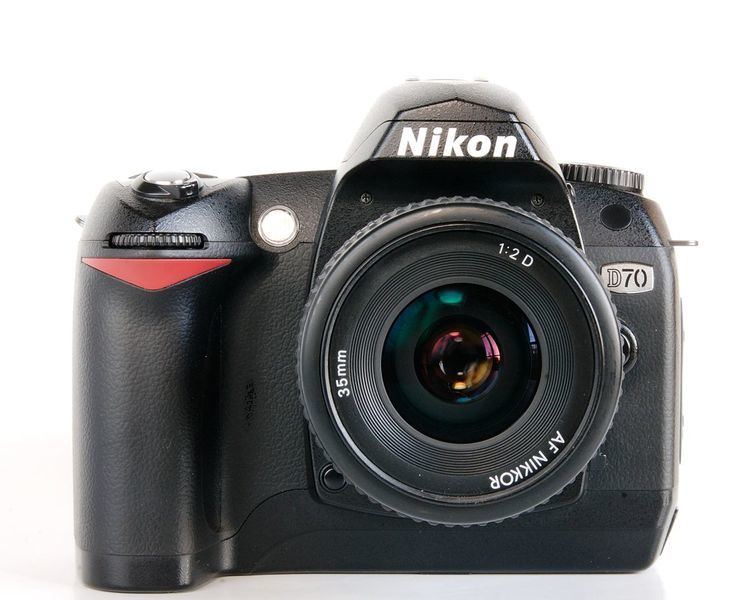 | ||
Maximum resolution 3,008 × 2,000 (6.01 million) ASA/ISO range 200 to 1600 (ISO equivalent) in steps of 1/3 EV manually or Auto ISO Recording medium CompactFlash (Type I or Type II) or Hitachi Microdrive | ||
The Nikon D70 is a digital single-lens reflex camera, introduced at the 2004 PMA Annual Convention and Trade Show, as Nikon's first consumer-level digital SLR, and a competitor to the Canon EOS 300D. It was often sold in a "kit-package" with the Nikon 18-70mm AF-S lens. The Nikon D70 was succeeded initially by the Nikon D70s and more recently by the Nikon D80 and Nikon D90, announced on August 9, 2006 and August 27, 2008 respectively. The Nikon D70 is the first DSLR camera built by Nikon's factory in Thailand. It debuted at a price of US$999.
Contents
Features
The D70 features include:
Due to its hybrid electronic/mechanical shutter, it is possible to flash synchronize the D70 and D70s beyond their published 1/500 maximum synchronization speed up to the maximum shutter speed of 1/8000.
The Nikon D70 has been considered superior to its predecessor, the D100, despite the higher price of the latter. The D70 is backward compatible with most of the older Nikkor lenses. Sigma, Tokina and Tamron are other popular lens suppliers of Nikon F-mount lenses.
D70s
In early 2005 Nikon announced the D70s. The D70s is essentially an update of the D70, adding a larger LCD screen (2 inches or 51 millimetres instead of 1.8 inches or 46 millimetres), though still having 130,000 pixels. The D70s also comes with the newer EN-EL3a battery with slightly higher capacity. While the battery performance is increased, the new version of the D70 lacks the previously included MS-D70 battery holder, which allowed users to mount three CR2 batteries in the camera in case of a dead battery (notably the adapter is not compatible with CR123 batteries). The camera is also equipped with a terminal for a proprietary remote release cable (MC-DC1).
In addition, the D70s features an increased 18 mm angle of coverage from its built-in flash; the flash on the D70 could only be used with lenses as wide as 20 mm. All other updates to the D70s are available for the D70 through a firmware update, which include improved auto-focus performance, updated menu design and updated in-camera printer support.
The Canon EOS 350D (known as the Digital Rebel XT in the US) was its then-competitor when the D70s was introduced.
